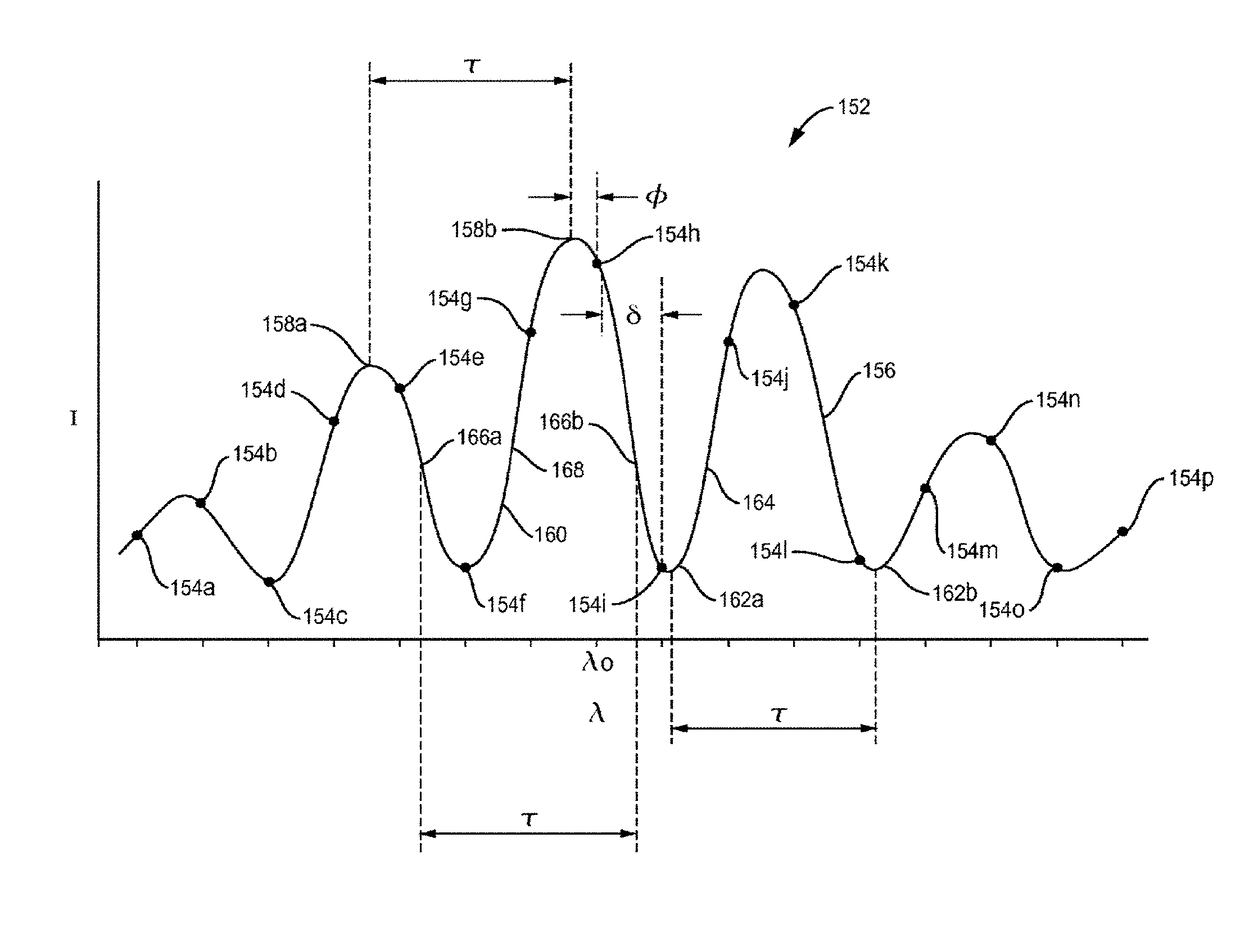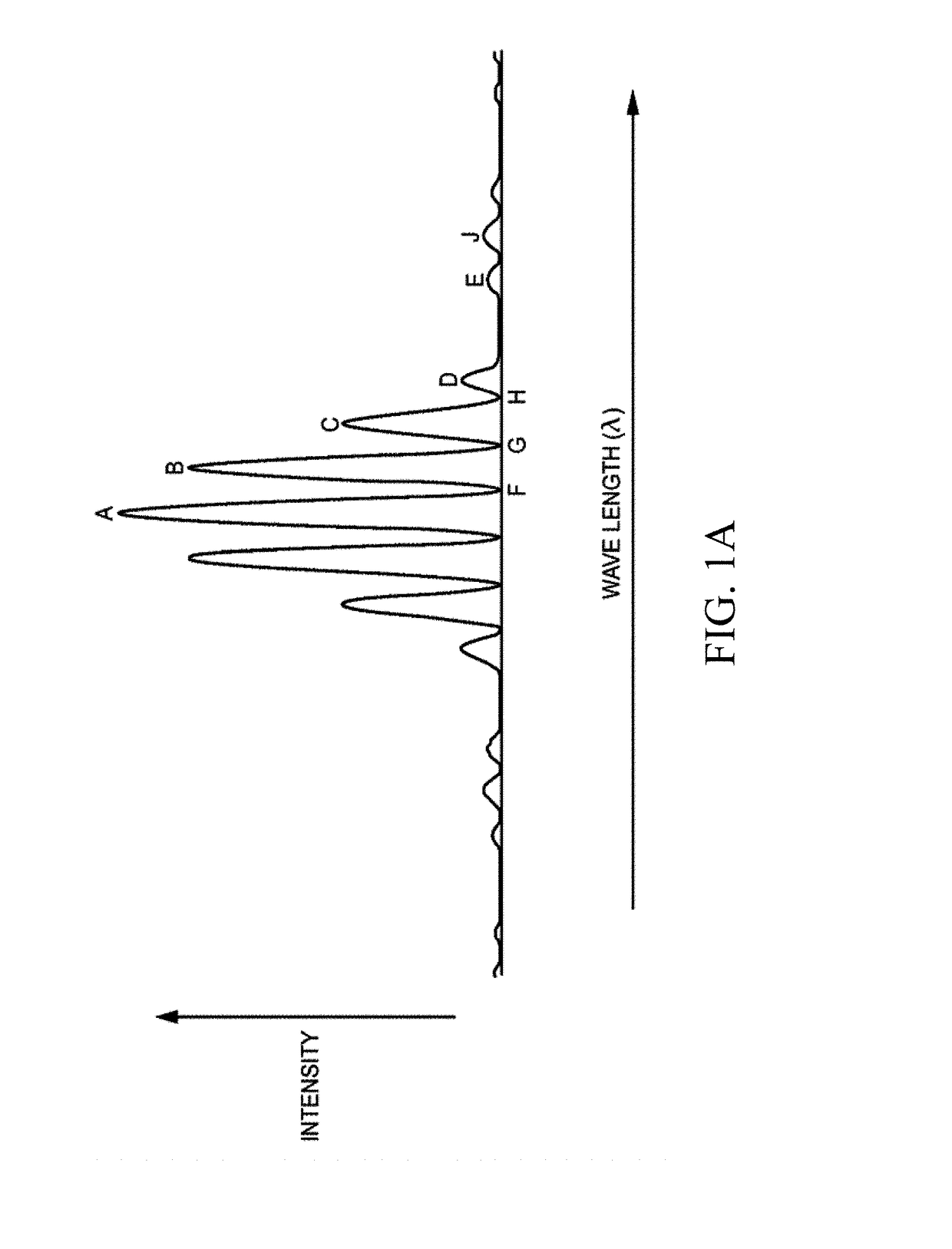Submersible N-wavelength interrogation system and method for multiple wavelength interferometers
a multi-wavelength interferometer and submerged technology, applied in the field of interferometric measurements, can solve the problems of limited measurement based on monitoring the intensity changes of non-quadrature-spaced samples, and achieve the effects of high resolution, high precision, and high precision
- Summary
- Abstract
- Description
- Claims
- Application Information
AI Technical Summary
Benefits of technology
Problems solved by technology
Method used
Image
Examples
Embodiment Construction
[0042]Various embodiments evaluate the interference patterns produced by the recombination of two electromagnetic beams derived from a common radiation source, and that traveled unequal distances (path lengths) from the point of generation. Specifically, by evaluating the fringe spectrum intensities at multiple wavelengths across at least one full fringe cycle, phase shift and path length differentials may be calculated at a high resolution, e.g., up to 1 / 100,000-th of a wavelength.
[0043]Various embodiments described herein take advantage of the characteristics of multiple wavelength techniques and provide a method that extends them to n selectively spaced wavelengths that are monitored via a spectrometer. This new n-wavelength technique can be combined with the absolute path length techniques without requiring any changes to be made to existing spectral detection setups. In some embodiments, the detector image is analyzed in the frequency domain in order to determine an initial fri...
PUM
| Property | Measurement | Unit |
|---|---|---|
| wavelength | aaaaa | aaaaa |
| wavelength | aaaaa | aaaaa |
| depth | aaaaa | aaaaa |
Abstract
Description
Claims
Application Information
 Login to View More
Login to View More - R&D
- Intellectual Property
- Life Sciences
- Materials
- Tech Scout
- Unparalleled Data Quality
- Higher Quality Content
- 60% Fewer Hallucinations
Browse by: Latest US Patents, China's latest patents, Technical Efficacy Thesaurus, Application Domain, Technology Topic, Popular Technical Reports.
© 2025 PatSnap. All rights reserved.Legal|Privacy policy|Modern Slavery Act Transparency Statement|Sitemap|About US| Contact US: help@patsnap.com



